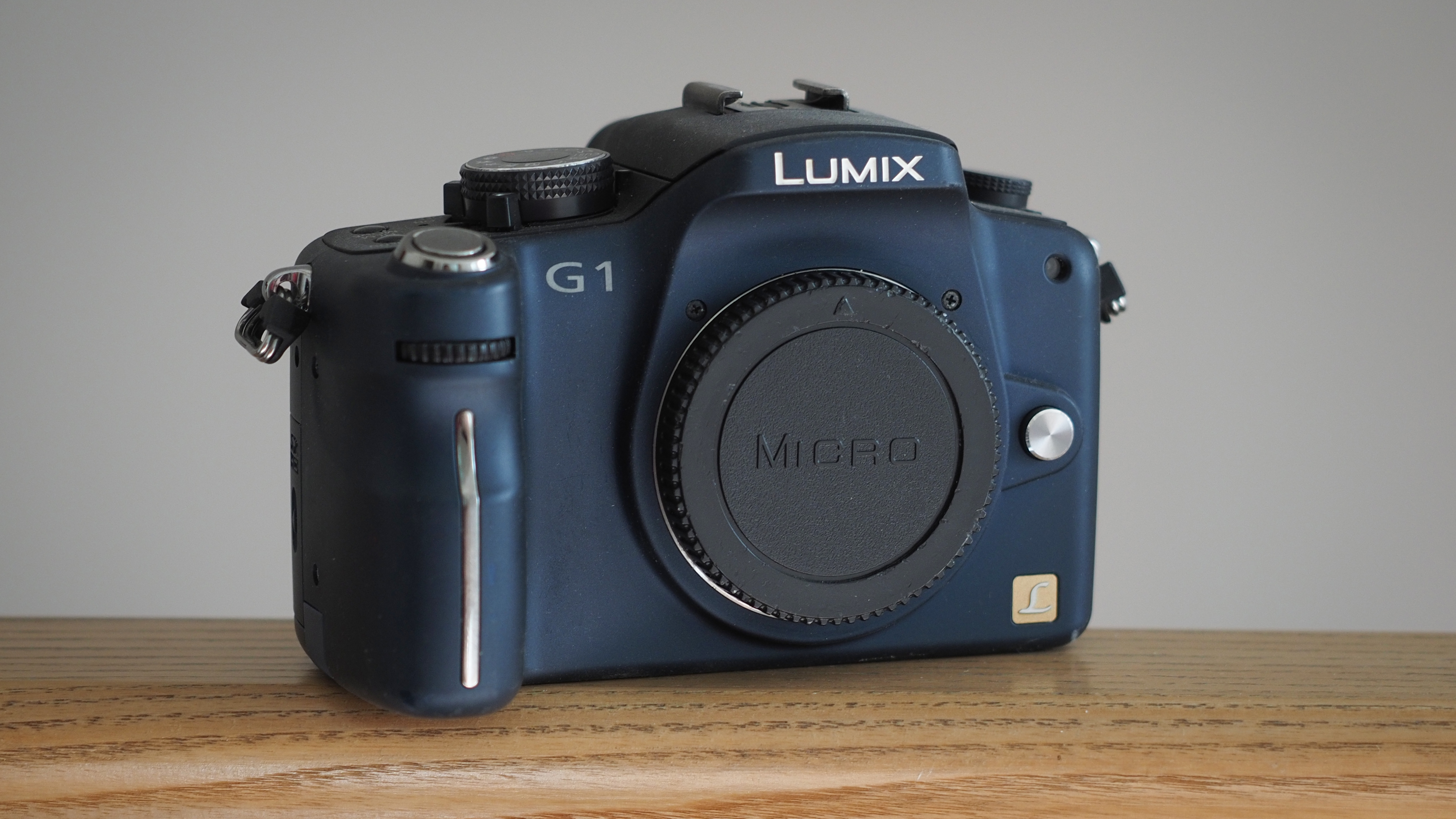Watch video: My thoughts on the first ever mirrorless camera!
Today is April 03, which in North American date format is 4/3. Some years ago, a marketing genius at Olympus or Panasonic had the bright idea of trying to capitalise by making this "4/3 Day", aka "Four Thirds Day", aka "Micro Four Thirds Day", as a way to celebrate the MFT camera format.
Unsurprisingly, that didn't really take off. However, given that it is 4/3 Day, I thought it would be interesting to look back at the first ever Micro Four Thirds camera – which is also the first ever mirrorless camera, period: the Panasonic Lumix G1. (You can also hear my thoughts, and check out more sample images, in the video above.)
Now, before I go any further, yes, I know all about the Epson R-D1 and the Leica M8. However, while they were indeed cameras without mirrors, I don't consider them to be true mirrorless cameras as they still featured optical finders rather than being dedicated live view devices. As such, they're no more "mirrorless" than a Polaroid camera, or a phone camera, or an old compact camera. (At least in my opinion. And this is my opinion piece.)
So, the Panasonic G1. Launched in 2008, its contemporaries at the time were hulking great full frame DSLRs like the Canon EOS 5D Mark II, and entry level APS-C DSLRs like the Canon EOS Rebel XTi / 400D.

The G1 offered one thing that neither of those, nor any other of its rivals, could match: size. Or, rather, lack of it. The G1 is a tiny wee thing, measuring and weighing just a fraction of a full fat DSLR.
At its heart was a 12.1MP image sensor, capable of a maximum sensitivity of ISO3200 and a top continuous shooting speed of 3fps, with a 23-zone contrast-detect autofocus system, 1.44 million-dot electronic viewfinder, 460,000-dot fully articulating TFT screen, 25 scene modes and a pop-up flash.
What it did not feature, however, was any video capability whatsoever – which is pretty surprising, given that video is one of mirrorless' clear strengths, and given how Panasonic would leverage its entire camera business around video in the years to come.
Also missing was a touchscreen, which combined with the lack of joystick makes moving AF points around the screen a slightly clunky process – particularly given that the autofocus needs lots of handholding to get the most out of it. On a related note, it's still astonishing that it took Panasonic 15 years to get away from this dreadful contrast-detect technology and finally embrace phase detect, as it has done starting with the Panasonic S5 II.
The camera's design and layout is a little odd, understandably, as Panny was still trying to figure out where to put all the knobs and dials. There is lots of wasted space on the top-left plate, which is monopolised by a focus selector (and the flash pop-up button), while the top-right boasts a mode dial that is hilariously bloated with all the scene modes.


The rear screen is what really dates the camera, between its low resolution and grimy TFT technology that makes you question if you need to get an eye test when trying to see if your images are sharp. Still, at least it's fully articulating – not even Sony and Nikon have properly caught onto that idea yet.
Pretty much everything else, though, holds up remarkably well. For a 15-year-old, first-generation, 12.MP image sensor, the G1 still takes a great photo – and you can see plenty more images in my video. Yes, that ISO3200 ceiling stings a bit – and images begin to degrade pretty severely when you start pushing the ISO – but I would be more than happy to use this camera for everyday imaging, social media shooting, and anything where I didn't need the ridiculous resolution of a modern camera.
Obviously there are things you miss on a camera this old. The 1/4000 sec maximum shutter speed can be limiting if you're working in bright conditions. The lack of silent shutter takes you by surprise, especially given that the shutter is louder than you'd expect. And I've been using mirrorless cameras with in-body image stabilization ever since the Olympus OM-D E-M5 in 2012, so the lack of IBIS was a disappointment – especially since it has long been a calling card of Micro Four Thirds.
Other than those quirks, though, I had a lot of fun with the Panasonic G1. I'm not going to do anything daft like recommend you pick one up; pretty much any mirrorless camera released since 2008 is going to serve you far better than this. But if you ever have the opportunity to try one out, I would highly recommend it – it's a fun history lesson, and a reminder of just how far ahead of the game Panasonic really was.

If this article was of interesting, you might like to check out the best Panasonic cameras and the best Micro Four Thirds lenses. You can also see what we think of this camera's great grandson, the Panasonic G9, and its full frame descendent, the Panasonic S1.







